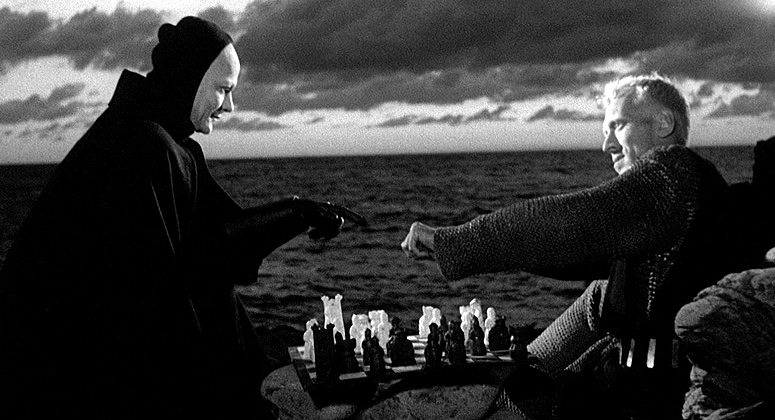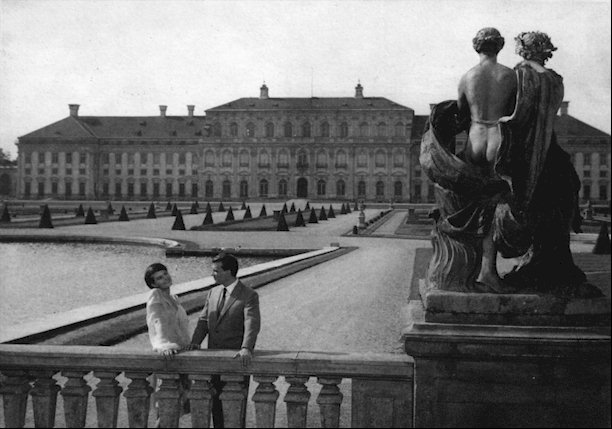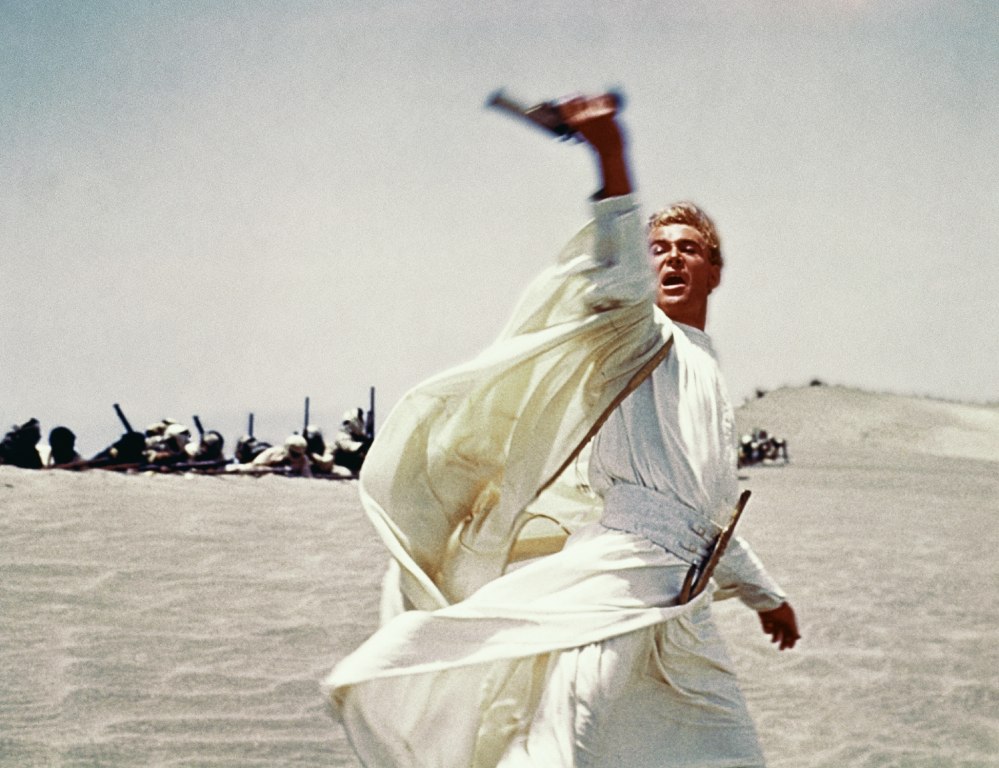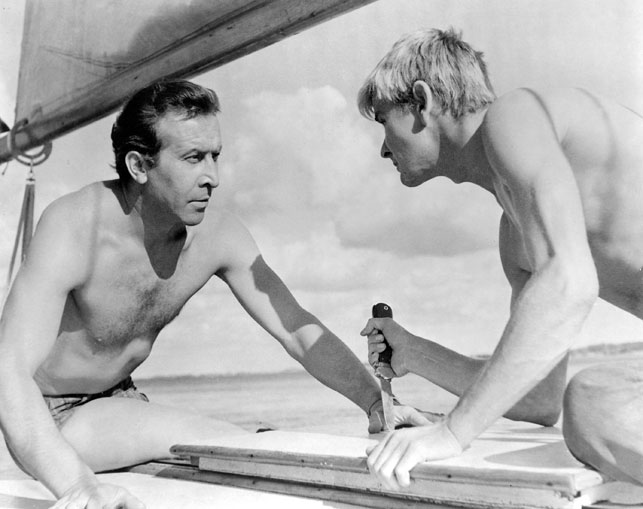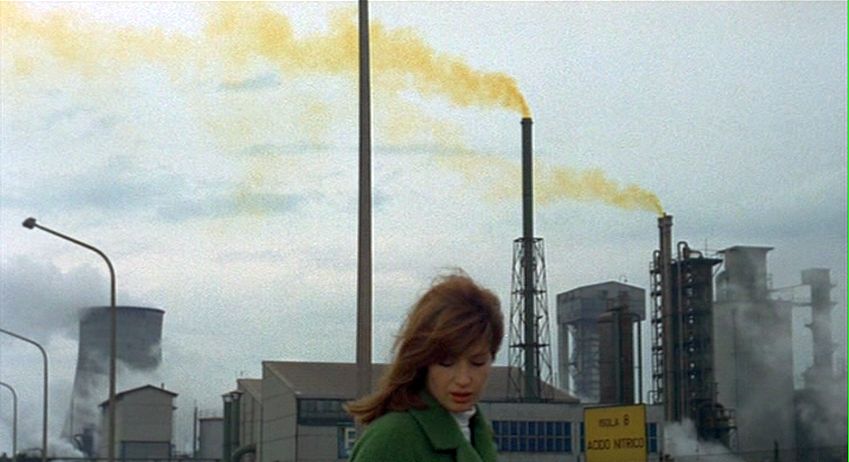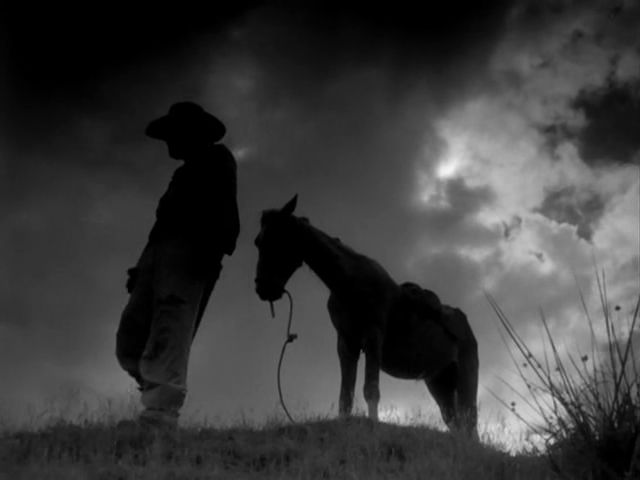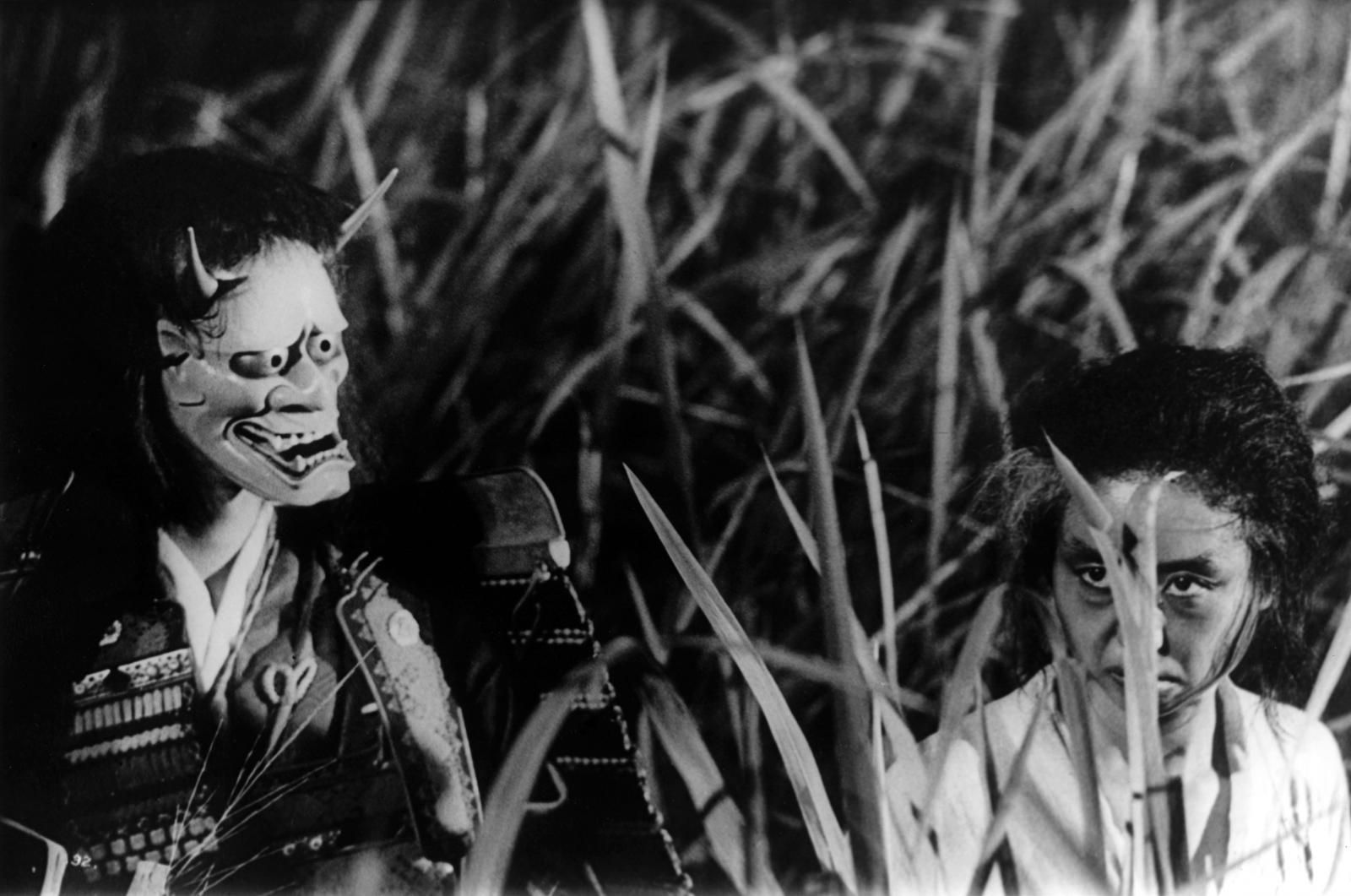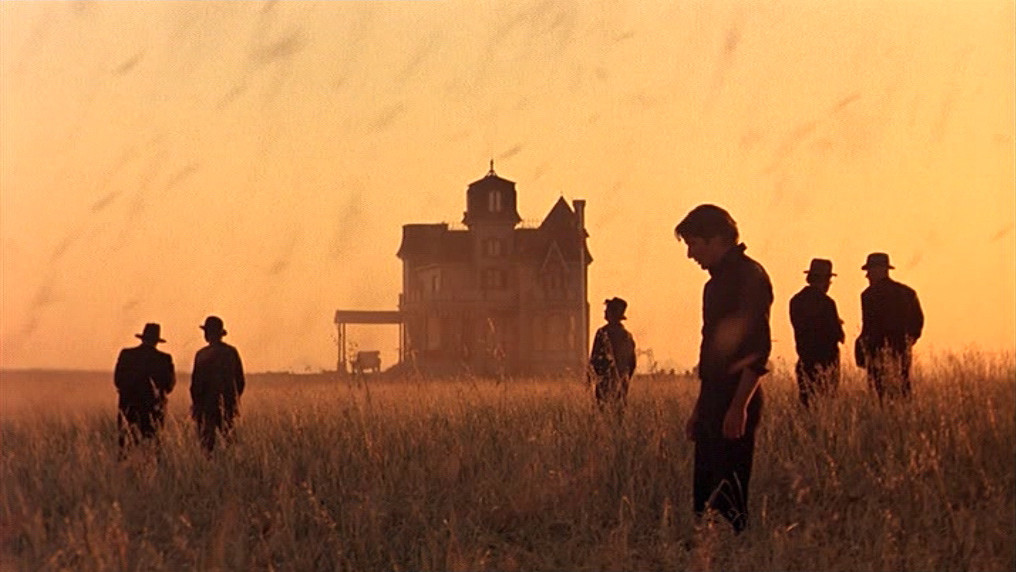
A landscape has the ability to shape us. It has the power to influence our behaviors, our emotions, and our memories. A place (the right place) can inspire awe. It can motivate its inhabitant to explore and get lost within it. It can also inspire a fear of the unknown and uncontrollable, reminding us that we are still at the mercy of the forces of nature.
The following films highlight the landscape as an influential aspect to the stories they tell and/or the characters within them. Whether the landscape is a character with which the other characters must interact (or fight against) or an inspiring force from which the characters draw their emotions or memories, these films use the land as a integral part of the stories they tell.
1. The Seventh Seal (1957, Ingmar Bergman)
Ingmar Bergman’s existential masterpiece in which a disillusioned knight and his squire comes back from the Crusades to find the plague raging throughout Europe uses the landscape of the Swedish beaches and countryside as a telling backdrop for the characters and their dilemmas.
Antonius Block (Max von Sydow) and his squire Jöns (Gunnar Björnstrand), weary from their travels abroad, stop and rest in a gloomy beach. Block is approached by a cloaked figure, the personification of Death (Bengt Ekerot), who tells him that his time is up. Instead of resigning to his fate, Block challenges Death to a match of chess- as long as he’s in the game, he can live.
Block and Jöns travel through the lovely Swedish countryside en route to Block’s castle, meeting a colorful couple of actors, Jof (Nils Poppe), his wife Mia (Bibi Andersson) and their infant son Mikael. The coming of the bubonic plague remains an imminent threat to their travels. The villages they stop in are ravaged by death- the villagers believing it is God’s punishment for their sins.
Faced with Death, Block questions his faith in God. He calls his time fighting in the Crusades a waste and searches for the knowledge (rather than faith) that supports a meaningful existence.
During the opening scene on the beach where Block first challenges Death to a chess match, the photography is dark; Block and Death are almost silhouettes against the great chasm of emptiness that is the ocean. The landscape in this scene mimics Block’s position in the film, “at the edge of life [facing] darkness.” Block reaches out in the darkness for God, but God is silent.
In contrast with the landscape surrounding Block’s stark inner turmoil, the land in which Jof, Mia, and their son Mikael inhabit is lush: the essence of spring and life blossoming. Within this landscape Jof has his own spiritual visions. However, instead of Death, he sees a bright scene of the Virgin Mary taking the infant Child for a walk. In Bergman’s film, the landscape reflects his characters’ spiritual conflicts or harmony.
2. Last Year at Marienbad (1961, Alain Resnais)
Alain Resnais’ visually luscious and complex film, Last Year in Marienbad uses the location of a château in the French country-side as the lynchpin of the relationship between two people who meet there on holiday. The labyrinthine castle through which the couple wander adds to the haunting, dream-like tone that casts a spell on the audience.
An unnamed man and woman (Giorgio Albertazzi and Delphine Seyrig) meet one night in a lavish castle/hotel, where the man asserts that the two of them met and had an affair one year prior. The woman, who is seemingly attached to another man in the hotel, denies the first man’s claims and appears to have no recollection of him.
Within the Rococo architecture, winding hallways full of mirrors, and perfectly geometric garden landscape, the man and woman explore the truth behind their history together. The landscape is a catalyst for their memories and/or fantasies. Through the use of bewildering fluctuations in time, Resnais leaves it ambiguous as to the true nature and history of their relationship, making for a surreal, hypnotic piece of art.
3. Lawrence of Arabia (1962, David Lean)
In this acclaimed classic, the landscape of the Arabian desert serves both as an obstacle to be overcome as well as a magestic inspiration for the British-born T.E. Lawrence. In contrast with the small country of England, the vast Arabian desert stretches out to what seems like infinity for the adventurous young lieutenant.
It’s the First World War, and the nonconformist Lieutenant Lawrence (Peter O’Toole) is stationed in Cairo. Bored of the paperwork he is forced to do indoors, Lawrence gladly rises to the challenge of meeting with Arabic diplomat and British ally Prince Faisal (Alec Guinness) and helps lead an Arab uprising against the Turks.
Lawrence traverses the enormous, sweltering desert, overpowered by its majesty. His love of the desert begins as a lust for adventure and desire to explore the unknown. As he gets further into the desert, however, Lawrence sees the destructive reality of the land and is exposed to the violence of war.
Shot in the magnificent 70mm photography by cinematographer F.A. Young, with the masterful direction of David Lean, Lawrence of Arabia remains an astonishing cinematic masterpiece.
4. Knife in the Water (1962, Roman Polanski)
In Roman Polanski’s first feature length film, the majority of the action takes place on a sailboat in the middle of a lake. His tense drama is amplified by the claustrophobic nature of the boat and the emptiness of the surrounding body of water.
As a couple, Andrzej (Leon Niemczyk) and Krystyna (Jolanta Umecka), are on their way to a local lake to go sailing, they pick up a young man (Zygmunt Malanowicz) hitchhiking. Once they arrive to the lake, Andrezej invites the young man to come sailing with them. Aboard the boat, the tensions between the two men build, as the hitchhiker’s large pocketknife becomes significant.
The spacious emptiness of the surrounding lake further confines the three characters within their small sailboat. Polanski makes great use of the landscape to isolate the characters from society, highlighting their subtle tensions that eventually erupt.
5. Red Desert (1964, Michelangelo Antonioni)
Antonioni’s atmospheric classic uses the industrial landscape of a factory-filled, polluted Italian city to illuminate the main character’s feelings of anxiety and alienation. Using color photography for the first time in his career, as well as an unnerving sound design built around almost imperceivable high pitched tonal screeches, Antonioni creates a toxic modern world in which his protagonist Giuliana suffers a nervous breakdown.
Giuliana (Monica Vitti), the wife of a chemical plant manager and mother of their young son, suffers from anxiety and nervousness, having recently returned from a mental hospital. Amidst the cold, noxious landscape of their industiral surroundings, she shares her inner turmoil with her husband’s co-worker, Corrado (Richard Harris).
The backdrop of the film is key in perpetuating Giuliana’s neuroses. The starkness of the drab factories, boats, and apartments mixed with the distressing sound design makes for a superbly unsettling tone. Antoinoni disturbs his audience with the city’s atmosphere, putting us within the tense world of Giuliana.
6. I Am Cuba (1964, Mikhail Kalatozov)
This Soviet film directed by Mikhail Kalatozov tells four short stories about the lives of Cuban people after the Cuban Revolution and the overthrowing of dictator Fulgencio Batista. The varied landscape of Cuba is presented with long, awe-inspiring tracking shots and wide-angle lenses that capture people within their environments.
Narrated by “the voice of Cuba,” these four stories capture the struggles and dilemmas of typical working class people of Cuba. Set within the fancy tourist attractions of downtown as well as the poor run-down neighborhoods and simple farms, the film displays for its audience a diverse assortment of areas in Cuba, representative of the unfair working conditions, rampant corruption, and unbalanced wealth distribution.
Using the gorgeous cinematography of Sergey Urusevsky, I Am Cuba illustrates the hardworking people of Cuba within the full spectrum of their environment, whether that be the fun, modern city of Havana, the beautiful sunkissed countryside, or the impoverished slums and guerilla warfare.
7. Onibaba (1964, Kaneto Shindo)
This Japanese historical drama/horror depicts the barbaric life of two women during a civil war in Japan during the 14th Century. The tall reeds surrounding their hut add an atmospheric element of mystery and foreboding.
During a Medieval Japanese civil war, an older woman (Nobuko Otowa) and her daughter-in-law (Jitsuko Yoshimura) kill soldiers and sell their belongings for food as they await the return of the older woman’s son. Hachi (Kei Satō), a neighbor and friend, returns one night and informs them the son was killed by a group of farmers. The younger woman (and now widow), begins an affair with Hachi, to the disapproval of her mother-in-law.
In this film, the landscape heightens the haunting aura surrounding the women. The towering reeds allow them to hide and hunt the solidiers they intend to kill. After killing the men, the women throw their bodies into giant holes dug into the ground. The land therefore, is full of skeletons, which makes the threat of a demon later on in the film seem appropriate within this mass graveyard. The gentle and steady swaying of the reeds amplifies the suspenseful moments.
8. Woman in the Dunes (1964, Hiroshi Teshigahara)
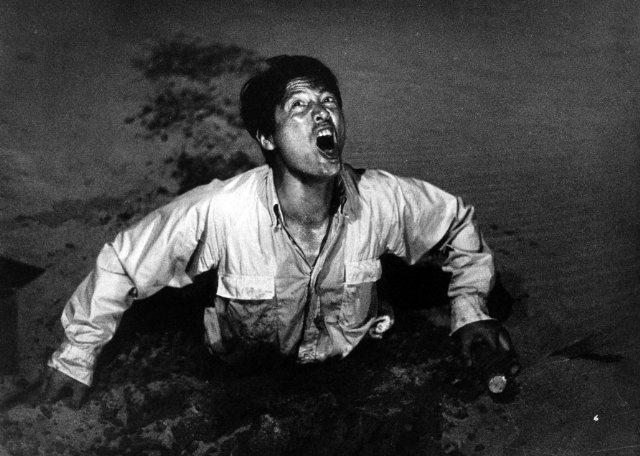
This existential psychological drama of the Japanese New Wave traps its protagonist within the unsteady sand dunes in a remote Japanese village. The sand inundates the inhabitants of a tiny hut at the foot of a dune, forcing their day to day existence to revolve around shoveling sand.
An unnamed schoolteacher and amateur insect collector (Eiji Okada) is vacationing at the beach, searching for a rare species of beetle. After he misses his bus back to Toyko, the local villagers invite him to stay with a young widow (Kyōko Kishida) who lives at the bottom of a sand dune. Because sand from the dune continually seeps down toward the widow’s hut, she spends her nights shoveling sand, which the villagers then collect to sell to construction companies.
The next morning, the villagers refuse to drop the ladder down the sand dune and inform the schoolteacher that he must stay and help the widow with her shoveling duties. Deprived of his only exit, the man desperately tries to escape through all possible means, meanwhile becoming lovers with the widow.
Evoking the myth of Sisyphus, the characters’ eternal battle with the sand keeps them immobile, forever struggling for mere survival. With Toru Takemitsu’s unnerving, minimalist score, Teshigahara masterfully directs Kōbō Abe’s story, creating an earthy, yet philosophical tale in which the landscape acts as a metaphor for existence.
